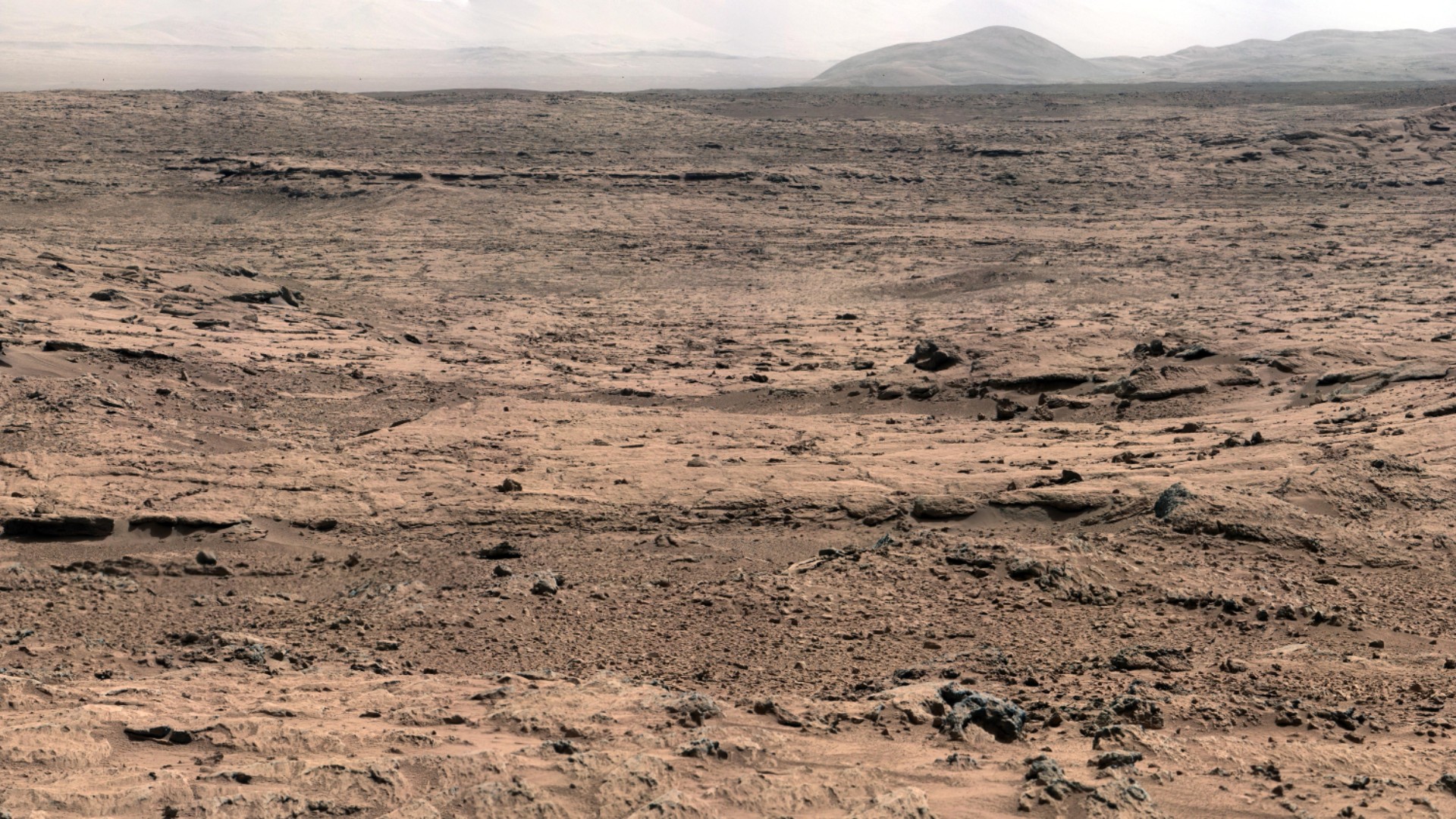Curiosity rover discovers opal gems on Mars with clues to watery past
Water-rich opals may one day provide a source of water on the Martian surface.

More than just a shimmering stone, opal — which is rich in water — has now been found in Mars' Gale Crater by NASA's Curiosity Rover.
Martian water ice is abundant at the poles but not so much at the equator (where Gale Crater is located). NASA's Curiosity Mars rover, which is currently exploring the crater, had previously beamed back data from its DAN (Dynamic Albedo of Neutrons) spectrometer, which was then analyzed by a team of researchers. In both older and newer Curiosity images, they noticed fracture halos, rings of light-colored sediment, that stood out because of their color; further tests proved that the light rock was actually opal.
Because opal is predominately composed of water and silica, the presence of this mineral could mean that there was once enough water there to possibly make the depths of these cracks habitable. Furthermore, the opal currently on Mars may one day be able to be harvested for the water stored inside, offering a source of water for any crewed missions to the Red Planet.
Related: New evidence for liquid water on Mars
Mars is a barren and sun-blasted planet. The amount of radiation on the planet's surface makes it inhospitable to life as we know it. However, inside subsurface fractures, there is a much darker environment better protected from the intense radiation that is constantly bombarding Gale Carter on the outside. Water-rich opals inside these fractures makes their discovery even more exciting.
"Seeing that these fracture networks were so widespread and likely chock-full of opal was incredible, research physicist Travis Gabriel, formerly of the University of Arizona, said in a statement. "Given the widespread fracture networks discovered in Gale Crater, it's reasonable to expect that these potentially habitable subsurface conditions extended to many other regions of Gale Crater as well, and perhaps in other regions of Mars. These environments would have formed long after the ancient lakes in Gale Crater dried up."

Gabriel and his colleagues think evidence of opal possibly means that the fracture halos on Mars were some of the last places that had an abundance of liquid water, and that Mars may have dried up after they formed.
Get the Space.com Newsletter
Breaking space news, the latest updates on rocket launches, skywatching events and more!
Opals form from a solution of water and silica. On Earth, solutions like this occur in geysers and hot springs as well as at the bottom of bodies of oceans and other bodies of water. When particles of silica settle at the bottom of the solution, they begin to create an opal. It is possible to harvest water from opals because while they may sparkle, they are not actually minerals.
Minerals have a tightly bound crystalline structure, but the structure of an opal is more loosely bound, meaning water can be extracted from it. Astronauts who explore Mars in the future might have a significant water source in fracture halos if more opal can be found. According to the statement, a fracture halo 1 meter in diameter "could house roughly one to 1.5 gallons of water in the top foot of the surface."
This find has now given the Perseverance rover a new focus. If fracture halos containing opal exist on Gale Crater, they may also be somewhere in Jezero Crater, where Perseverance is searching for signs of past life. Jezero Cater is already confirmed to have once been a lake, so there may be more Martian opal waiting to be unearthed.
The research is described in a paper published in the Journal of Geophysical Research: Planets.
Follow us on Twitter @Spacedotcom or on Facebook.
Join our Space Forums to keep talking space on the latest missions, night sky and more! And if you have a news tip, correction or comment, let us know at: community@space.com.










